The Intersection of Dentistry & Artistry
We explore how artistry plays a role in clinical care, practice design and operation, plus the technology and tools that can help you deliver it in your dental practice.
The Intersection of Dentistry & Artistry. Photo courtesy of Andrs/stock.adobe.com.
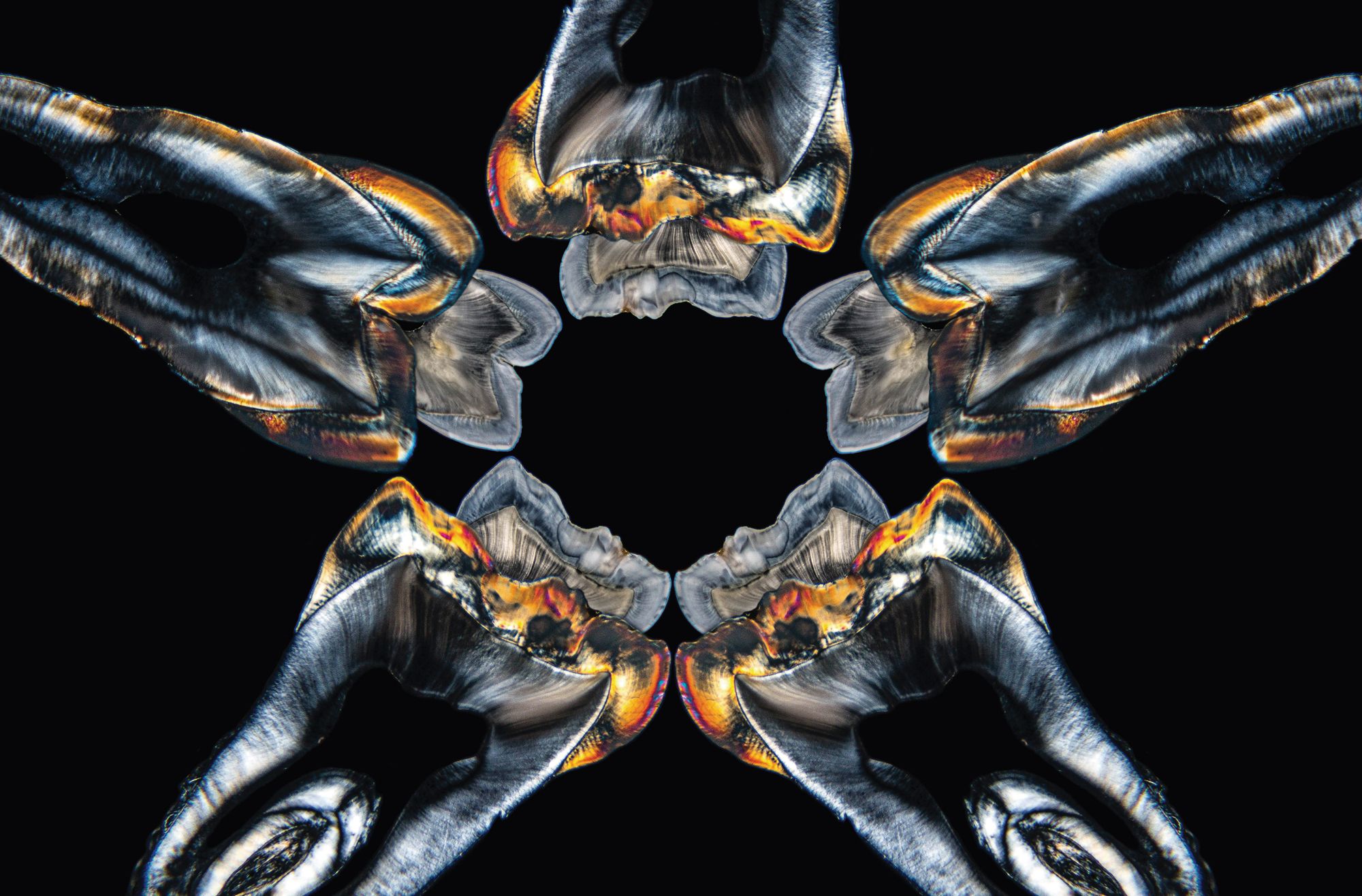
Evidence-based dentistry is proud of its science, and one might surmise that anything on the emotive side is unwelcome.
Art, on the other hand, is, a subjective endeavor. Scientific method eschewed, imagination and creativity are the driving force behind it. A touchy-feely medium to its core, art seems far removed from any dental operatory activity.
However, artistry in dentistry is not far at any given moment from a dental operatory. Every day, dentists restore function to failing teeth using not only the science that governs their technique but also the artistry that guides their hands. It is time to explore this dichotomy and how artistry plays a role in clinical care, practice design, and operations, and the technology and tools that can help you deliver it in your dental practice.
Todd Snyder, DDS, FAACD, FIADFE, ASDA, ABAD, compares artistry in dentistry to the work of a painter, photographer, or sculptor whose hands and mind come together to create something amazing.
“I see it as an individual that has a passion for doing the best they can and has an artistic eye and has developed talents and skills over time to create something beautiful, amazing, and unique,” Dr Snyder says.
Artistry is essential in many of today’s dental operatories. Lisa Jeong, marketing director for Tokuyama Dental America, says patient expectations drive a focus on clinical artistry. Patients see their teeth reflected from their screens all day on social media or Zoom calls, so restorative dentistry is about function, longevity, and appearance.
“They want to have a natural smile, but also a brighter, better smile,” Jeong says.
“It’s not just how they look to you but how they look to everyone in the world on social media,” says Sarah Jebreil, DDS, AAACD. “Artistry is different to everyone and every patient.”
Form, Yes, but Not Without Function
However, the patient-driven, esthetic demand for dentistry is not an either/or choice; it’s more like theatrical improvisation’s sacred doctrine, “Yes, and....”
“Beauty is great, but it also has to have function,” says international speaker and presenter Troy Schmedding, DDS, AAACD.
“You cannot do something to improve the esthetic that is not acceptable to the body also,” says Shashikant Singhal, director of education and professional services for Ivoclar. “You have to understand the fundamentals of occlusion, how the patient bites, how much tooth structure is left, and what the limitations are of the materials you are using.”
Moreover, treatment options for what the patient wants and what the patient needs should complement each other. Singhal uses the example of a patient who has an implant with receding soft tissue and metal showing. The patient might ask the dentist to improve the implant’s appearance. However, the patient also wants the implant to continue to function, even if they don’t say so at the time. Moreover, the soft tissue recession indicates the implant has functional problems, too, which the dentist must address, making clinical decisions trickier.
“It is extremely important to understand patients’ expectations and deliver those expectations without compromising the functionality of the restoration or without compromising the clinical success of that restoration,” Singhal says. “Everything is a balance.”
Setting the Stage for Quality Care
The artistry process comes in stages. Lisa Aguirre, dental solutions product manager for Roland DGA, compares the artistry in restorative work with digital workflows to layers of paint on a canvas. Artistry begins at the treatment planning phase, where the clinician lays out a plan, like a pencil draft for restorative dental care based on the patient’s individual needs. The prep keeps to that sketch, followed by the first layer of paint, which is the CAD process. Next is the milling or printing phase, then finishing the materials with staining and glazing, and placement of the restoration.
Chairside milling solutions from Roland DGA are able to produce strong, esthetically pleasing, same-day restorations. Transitioning to digital solutions such as these can boost a practice’s efficiency and profitability without causing disruption.
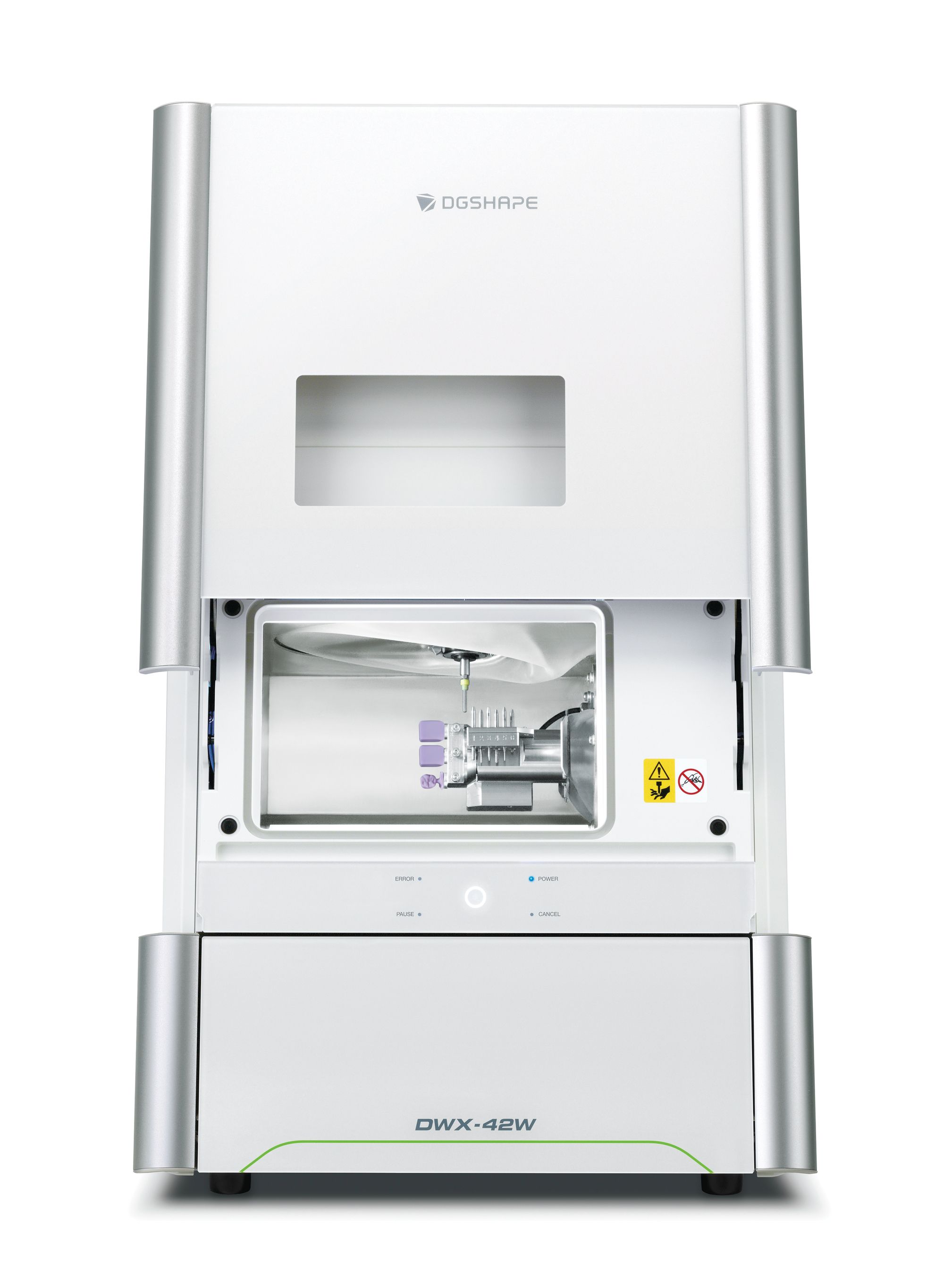
“Each step paints a layer on the canvas to achieve the final restorative result in the patient’s mouth,” Aguirre explains.
However, some might say the first stage of artistry in dentistry occurs before treatment planning and execution in the way the practice presents itself to patients. Tim King, lead designer for the Patterson Dental office design team, thinks artistry in the dental practice design crosses paths with the functionality. For example, when a dentist creates a calm, peaceful waiting room, it helps patients relax, making it easier to treat them in the operatory.
King’s team at Patterson has many ways to handle practice design choices that are artistic but also deliberate and strategic. For example, the team may set up the reception area so the first thing a patient sees is a smiling face in front of the dental practice’s logo, setting the stage for a friendly, happy place. Another example, King says, is designing the practice flow to take patients by the sterilization room on their way to the operatory so they can see how the practice keeps them safe.
“We can do some things throughout the office design to make the patient more comfortable,” King explains.
Roland DGA’s DGSHAPE DWX-42W is an open-architecture mill, allowing for easier integration with many intraoral cameras. Veneers can be crafted simply and esthetically without taking too much time.
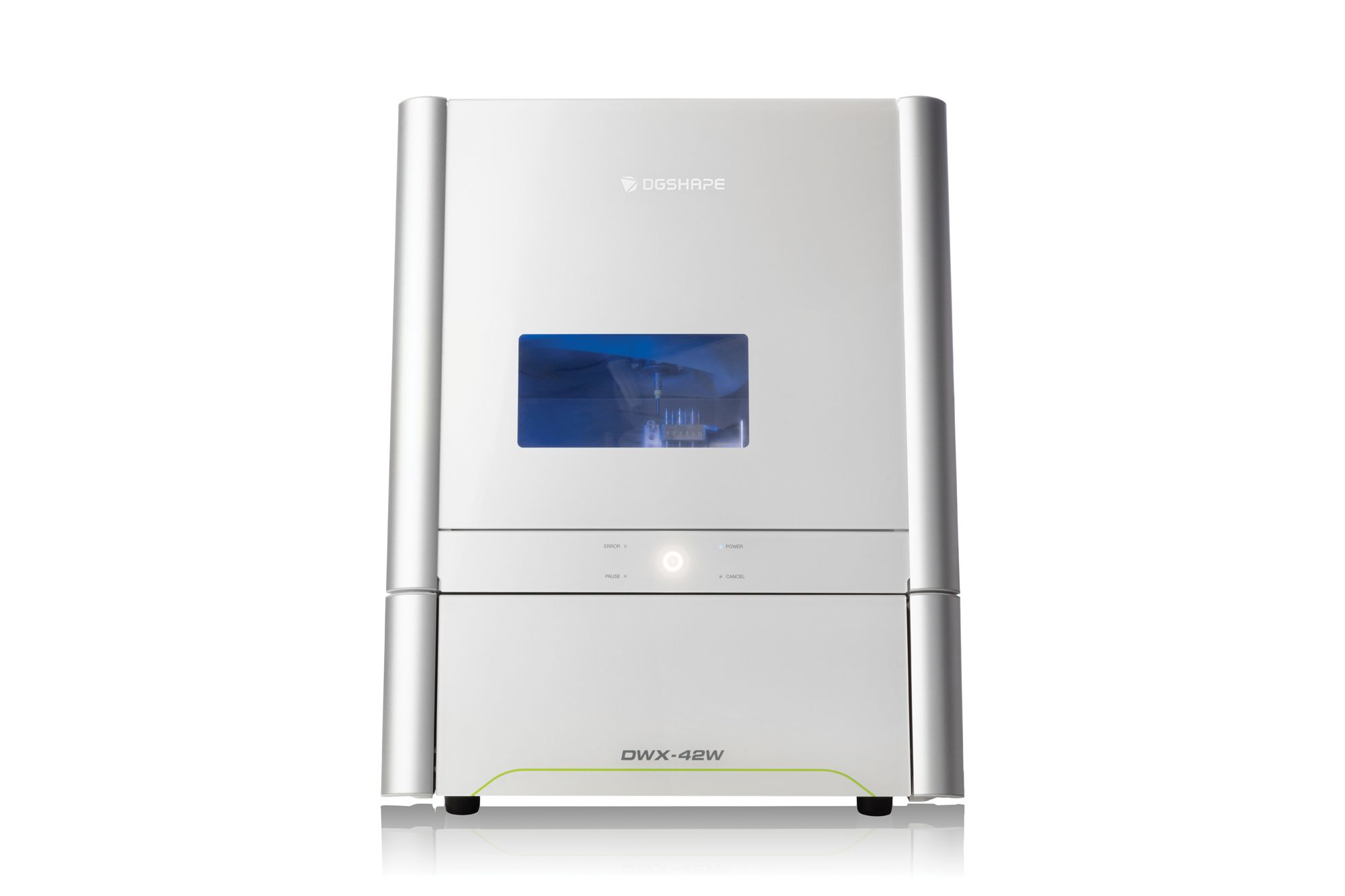
Jochen Kusch, CEO of SICAT, takes a philosophical view, comparing good dentistry to artwork, particularly as you look into the esthetic aspect and what a master dental technician can produce. Art, he explains, is always the product of a personal perspective, from traditional to modern to street forms. A goldsmith produces jewelry that reflects their personality, and it’s the same with dentistry. That concept, Kusch says, extends to the presentation of a dental practice and the reaction it inspires.
“From the architecture, design, and art they display, you will see [the dentist’s] passion put into the practice,” Kusch says. “It will have an impact on the mental well-being of the patient. The atmosphere will drive the whole experience in a certain direction and set the patient’s expectations for treatment. If the treatment is in line with the whole experience, you will have a fully satisfied patient.”
Kusch remembers an example of practice design influencing patient behavior from when he worked for Siemens’ oncology department. The environment of some private practices was calming and relaxing, especially compared with a hospital, with features like gardens for patients to enjoy. This atmosphere enhanced the well-being and comfort of the cancer patients there.
“The same is true in a dental practice. It feels old-fashioned if you come into an overcrowded, busy practice with stuff everywhere. If you come to a calm environment, where nice artistry is all around you, you feel good. You would even be pleased to wait a little longer,” Kusch says. “It’s like a time out of your busy life. It will set a different experience and expectation.”
The Art of Materials Science and Technology
The materials and technology available to dentists contribute to dental artistry as well. As a dentist fully accredited by the American Academy of Cosmetic Dentistry (AACD) and an assistant professor in the Department of Integrated Reconstructive Dental Sciences at the University of the Pacific, Dr Schmedding appreciates new restorative materials and what they make possible.
“The artistic materials coming out are phenomenal, in everything from the composite resins to the overall in-office lab fabrications of indirect restorations like glass and ceramics,” Dr Schmedding says.
He also appreciates how materials and technology allow dentists to choose how they work. Dental artistry can occur while working with the lab technician as well as at the individual level chairside, where dentists can also challenge themselves artistically using composite fillings and veneers to create work that blends seamlessly into the surrounding dentition.
“Those types of things have advanced dramatically in the world of composite-based dentistry,” Dr Schmedding says. “In terms of the newer nano-hybrid materials, they are esthetic and strong and they allow us to layer different materials on top of each other to create different translucencies and opacities, and different characteristics that natural dentition brings to the ballgame.”
Materials development also uses science to elevate artistry in the clinical space. One example is how OMNICHROMA from Tokuyama Dental America uses smart chromatic technology associated with the natural phenomenon of structural color to shade match any shade with only 1 composite. Structural color describes how a color might appear different based on how it amplifies and reflects light at the viewer. For example, a CD seems to change color as you move it around, but it does not; the light reflection makes it appear to change. OMNICHROMA’s uniformly sized spherical fillers amplify the light at different wavelengths and achieve this same effect, which takes a lot of the guessing out of shade matching, Jeong says.
“Using the science of structural color and the technology of smart chromatic technology to basically create that environment so you’re no longer trying to match it—the product itself is doing that matching for you,” Jeong says.
However, having those features built in takes you only so far, Jeong says. The deeper the understanding the clinician has about how color works, how light works with the tooth, the more they master the use of the material—that’s when dentists can take their artistry to the next level.
“So it’s like anything that is new. At first, you don’t know much about it and you start to learn gradually,” Jeong says.
“The basics are there and were taken into consideration in the development of OMNICHROMA,” says Abir Bou Khouzam, senior marketing manager for Tokuyama US. “It’s how much clinicians know about the product and master its use that they can achieve with the single shade any type of esthetic restoration they want.”
Dr Snyder agrees that materials improvements and technology have made it easier to provide beautiful restorations. The multilayered color gradients and variable translucency levels simplify the delivery of lifelike restorations. Moreover, the nano-hybrid technology creates the same effects in 2 layers that past materials might have required as many as 5 layers.
Scanning technology improves how dentists see preps, too, Dr Snyder says. Creating minimally invasive preps or preps that achieve retention with a convergence of less than 6º is a form of artistry. Technology helps dentists make preps parallel or add retentive factors like box forms and grooves.
“I’m old school in my preparation philosophy, but I believe it makes things last versus relying solely on adhesion,” Dr Snyder says.
Furthermore, fabrication methods have changed what’s possible for printed provisionals. For example, Dr Snyder says that where some offices may struggle to create an esthetic provisional restoration, you can now print an esthetic and robust temporary for an entire arch or for the anterior teeth.
“Now the machine is doing it for you,” Dr Snyder says. “So again, your artistry has changed because of the technology revolution.”
The Art of Going Digital With Communication and Collaboration
Aguirre says digital dental technology and workflows aid artistry by becoming essential parts of how clinicians and labs can adapt to the changing world of dentistry and the increased demands and expectations of patients. In addition, digital workflows provide affordable, precise, and predictable outcomes with reduced turnaround times.
“Products like Roland DGA’s DGSHAPE DWX-42W chairside milling solution make same-day restorations simple and easy,” Aguirre says. “The DWX-42W’s seamless practice integration and open architecture allow for use with the intraoral scanner of choice and consistently produce reliable, lab-quality, esthetic chairside crowns, bridges, onlays, veneers, and more, making same-day restorative dentistry a reality for beginner and experienced users alike.”
Aguirre says another essential part of using digital workflows successfully requires setting proper patient expectations in the treatment planning stage. Some patients might not realize that their oral health dictates what is possible esthetically and artistically. She compares it to building construction.
“If…the drawings are not right from the beginning, nothing is going to go right from there,” Aguirre explains. “It’s the same way with the treatment plan.”
Dr Jebreil uses digital imaging to set patient expectations. Using the videos and photos helps dentists and patients get on the same page.
Singhal suggests using software and photos to develop a treatment plan with patients. Augmented reality apps like IvoSmile by Ivoclar help provide digital communication and consultation for cosmetic dental treatments, he says.
Converting to a digital workflow also improves collaboration with the lab, Singhal adds. For example, communicating characteristics in the natural dentition is easier. Before, the dentist would draw it on paper and say, “Put it in the center, OK?” With digital technology, the image shows precisely where the lab should re-create the natural tooth’s characteristic. This improvement in communication reduces redos and is a victory for everyone involved, he says.
“But digital technology is not everything. We still need lab technicians or clinicians to serve as experts and define what the expectations are,” Singhal says.
Dr Snyder agrees digital technology can take restorative work only to a certain level. The dentist’s hands and mind then take the restoration beyond that.
“Someone a little more talented or skilled or who has more training can see where to create the different layers and effects to take it to a different level of realism in a very thin amount of space, like a couple of tenths of a millimeter,” Dr Snyder says.
“There are a lot of things technology can’t do as well,” Dr Jebreil says. “I have a 3D software to do wax-ups, and I get frustrated because sometimes I think it would be easier to do by hand. But technology is improving all the time, so I don’t think that’s a forever thing.”
Kusch believes technology can guide and support the dentist’s technical work, which gives the dentist more time to pursue what they are passionate about: giving the patient a nice smile. Technology, in that way, gives dentists more time to be an artist, Kusch says.
Technology also provides a chance to treat the patient holistically. Kusch says a 3D scan reveals opportunities to optimize patients’ health and provide the most minimally invasive treatments possible.
For example, the tooth might have inflammation, which the dentist can fix. However, the cause of the inflammation could be a bite problem. By correcting the bite, Kusch says, a dentist fixes the tooth and the problem. Kusch says the SICAT technology suite also reveals a complete view to enhance your diagnoses, from airway analysis for sleep apnea referrals to endodontic treatment planning to SICAT surgical guides for implants.
“You can create much more value in your practice with your existing patient pool,” Kusch says. “You increase the treatment and quality of life for your patient at the same time as you increase the revenue and profits of the practice.”
The Art of Practice Design Visualization
Technology also improves how dentists see practice design. King and the Patterson office design team use technology to show a virtual 3D version of the planned office design using their 3D office design software.
Before the software implementation, King says dentists had difficulties visualizing the flow the office design team had created in plan form, meaning a 2D plan resembling a blueprint. However, the 3D virtual version of the proposed design shows dentists what the 2D plan is going to be “in real life,” making it easier to visualize. One of the most significant benefits is that the dentists can see the proposed finished product for their new practice design before making any final decisions.
For example, the software can show the dentist the patient’s perspective from entering the front door into the reception area. If King wants to demonstrate why the team designed the sterilization room the way it did, he can “walk” the dentist into the virtual space on his screen and show the flow of dirty to clean instruments. The same goes for the dental lab or to show how the team optimized the proposed operatories for improved ergonomics.
“It makes things pop for them,” King explains.
In addition to the virtual 3D models, Patterson’s office design team also leverages its relationships with local manufacturer’s reps to accommodate the proper technology suite design specs for the dental specialty or how the dentist wants to practice.
“To me, that is the beautiful part of what we do,” King says. “The art of office design is that we can create an office that works specifically for that doctor.”
The Future of Artistry Requires 3 Things: Practice, Practice, Practice
Dr Snyder believes there will always be a demand for artistic restorative work, so there will always be people who can push the craft and make excellent restorations. Since dental schools don’t get into comprehensive cosmetic dentistry, he says dentists should get more training online and in person. For example, Dr Snyder’s Legion.dentist features courses to help dentists improve their artistry with cosmetic procedures.
“Over the past 3 years, I have created more courses so that people could learn from all over the world,” Dr Snyder says.
Dentists who want to deliver more artistic restorations should make training their eye a priority, Dr Jebreil says. That allows them to pinpoint the problem with a patient’s smile quickly and make a diagnosis and treatment plan more easily and quickly. The AACD provides excellent training to hone your artistic eye, Dr Jebreil says.
“When you train your eye, it’s easier to see what the pitfalls of each case are so you can set realistic patient expectations and not get in over your head with something you can’t deliver,” Dr Jebreil says.
When it comes to education, practice makes perfect, Dr Schmedding says. Dentists should incorporate education and work on procedures to enhance their artistic skills with the composite materials available.
The AACD continuing education and hands-on course options give dentists a few directions to take their training, Dr Schmedding adds. He believes this training is essential, even if dentists automate some of their fabrication. The hands-on experience to develop the dentist’s skills is vital to creating lifelike restorations, Dr Schmedding says.
“The only way we can enhance our skills is by doing it, practicing it, and making it better. So spending the time educating yourself and learning how to become a better artistic or cosmetic-based dentist is really what it comes down to,” he says.
The Tokuyama team also says continuing education will be critical for dentists to meet the rising expectations for artistry in the field. Jeong and Bou Khouzam say a live workshop makes a significant difference in the training outcome. Access to a key opinion leader with decades of experience is critical to furthering artistic ability working with composite technology. In addition, getting feedback on details like bevels and layer thickness is challenging in a virtual environment.
People leave in-person training with more enthusiasm and interest, Jeong says. And having worked with the product, clinicians feel more confident to use it in their daily practice.
“It’s not going to look the same on the camera,” Jeong says. “If you have confidence and you start doing it automatically, it becomes a habit and then becomes part of your daily life.”
Singhal thinks online training has a place in the future. It’s great for people who cannot travel, like a mom with 3 kids who can’t get away but wants more continuing education. Virtual is an excellent platform, in that case, Singhal says. “But we do see that more and more people prefer in-person training right now,” he says.
Dr Snyder sees benefits to online training over hands-on training. First, dentists can learn from clinicians worldwide without having to travel. Moreover, clinicians can rewind online training if they want to see something again or mimic it while practicing with the materials. On the other hand, when returning from a 3-hour course at the Chicago Dental Society Chicago Midwinter Meeting or another big dental show, a dentist might not touch the materials for weeks or months until the appropriate case presents in the chair.
“The ability to learn artistry and improve your skill set can be far quicker through online education and through hands-on learning via the internet,” Dr Snyder says. “That’s a phenomenal thing we didn’t have in the past.”
However, Dr Snyder notes that there are strengths to being in person. For example, online courses do not allow the teaching clinician to give dentists specific feedback on the details of their technique the way they could by peering over the attending dentist’s shoulder in person.
“That aspect still isn’t there,” Dr Snyder says of online training, “but it’s getting closer.”
Dr Schmedding says virtual education has been excellent through the COVID-19 pandemic and is a convenient option for starting training. However, he also sees an increased value in hands-on training.
“For a lot of doctors, being around people and getting input and seeing what other people are doing and teaching in a hands-on environment where you can talk to people is extremely important,” Dr Schmedding says. “For me, the benefits of in-person education far outweigh the webinar series.”
Preparing to Meet the Future of Artistic Demands in Dental Practice
King thinks that to prepare for the future of artistry in dentistry regarding practice design, the dentist and the team must define the type of dentistry they want to practice. Variables such as where to put hygiene, the amount of oral surgery they want to perform, and how much hands-on work and fabrication they want to do in their dental practice’s lab, among other details, will dictate the practice design details.
In addition, King says there are many artistic and strategic methods designers use to minimize patient anxiety and enhance patient perception of their dentist. For example, the design team often separates the treatment consulting room from the business office, where billing occurs, in the practice design. Creating this separation can enhance the patient’s view of the dentist’s role as a caregiver and health care provider and help them relax during treatment planning.
An important aspect of practice design, the floor plan assists in boosting a practice’s draw to patients. It takes a keen eye to understand the flow of practice design, and virtual floor plans—such as this one crafted by King’s team at Patterson Dental—can help visualize the best fit for the practice.
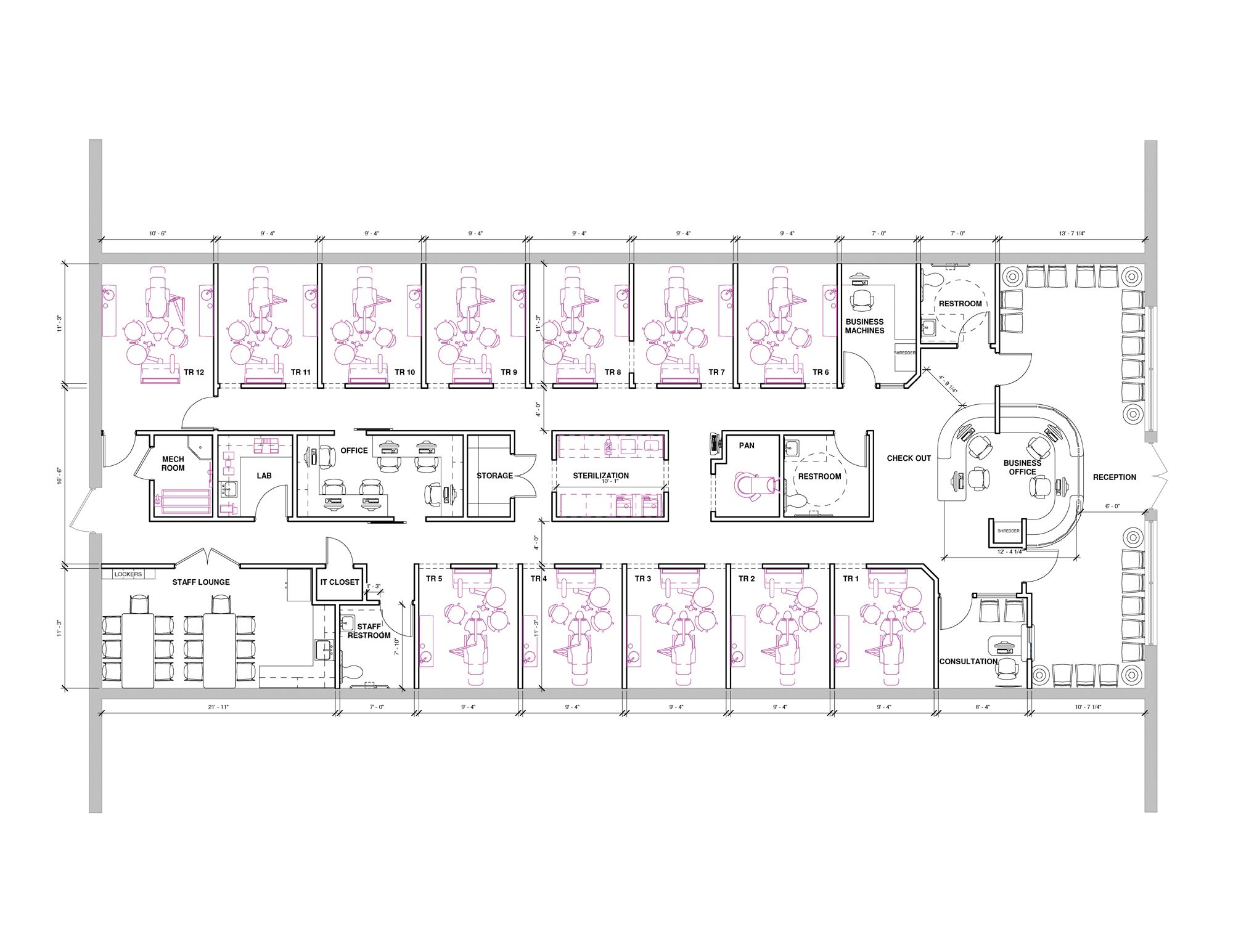
“A relaxed patient is not afraid to come back, which is critical because patient acceptance is important,” King says.
Singhal agrees with King that dentists should be prepared to define the goals for their practice and design the workflow that will get them there. Singhal also thinks that future should include digital workflows. Not only will a digital workflow enhance chairside artistry and collaboration with dental labs, but it will also add value to the practice when the dentist sells it.
“So it all depends on what they would like to do—the practice goals and the business evaluation. Then, define the workflow and learn about the tools that will help them get to better esthetic outcomes,” Singhal says.
Jeong also thinks artistry will continue to be essential in the operatory. People are investing in their smiles. Dentists need to have an affordable way to help patients achieve these esthetics that are important to them.
Understanding how the colors work together, Jeong says, is essential whether the dentist is using a complex system with 30 to 40 shades or a simplified system like the OMNICHROMA 1-shade universal product. However, Jeong thinks understanding Munsell’s 3 components of color is especially crucial when working with a streamlined system to get the deeper esthetics that dentists usually use more shades to achieve. Jeong says they get images from clinicians of finished cases, and the dentists are amazed with what they can achieve with layering using the simplified system.
Dr Snyder says dentists should also consider where they want to go with their practice. Insurance companies reward efficiency and productivity, and artistry takes time. Do they want to push themselves and make excellent restorations or let insurance companies dictate how much time and energy they put into the restorations? With insurance reimbursement getting lower every year, Dr Snyder sees dentistry approaching a crossroads.
“You are seeing fewer artisans out there to some extent because of insurance, at least in the United States,” Dr Snyder says.
Dr Schmedding sees that the development of CAD/CAM technology has brought more lab work chairside, which drives clinicians to learn different ways to create beautiful restorations.
“It compels clinicians to get more advanced in how to use tints and opaquers and how you layer porcelain. It challenges clinicians to step out of our box because a lot of us don’t do our lab work,” Dr Schmedding explains. “That involves lots of education, lots of practice time to enhance your skills to become the best dentist you can.”
Dr Schmedding also thinks sending artistic work to a lab is another excellent way to go. In this team approach to artistry, the dentist becomes the quarterback, focusing on the proper treatment plan and preparation while communicating esthetic expectations to the technician. Getting a perspective from someone who has more artistic abilities than you do can be a significant benefit.
“There is no 1 right or wrong way,” Dr Schmedding says. “Knowing where you want to become better is a big part of it.”
Dr Schmedding says there are limitations with both the chairside and the team approaches. For example, there is a limit on the universal direct materials clinicians can use chairside for restorative work. Dr Schmedding doesn’t like to use universals in treatment plans that would benefit from artistic esthetic work. Instead, he believes in blending different restorative materials and colors to achieve a lifelike restoration.
Regarding the team approach, lab technicians have restoration types and materials they prefer. Dr Schmedding works with a few labs and technicians with various specialties. Depending on the case, he sends the work to the appropriate technician.
“We all have our high and our low points. So the dentist has to make that decision on who they feel would handle that case and that material the best because they are not all created equal,” Dr Schmedding says.
Aguirre says to prepare for the future demands of artistry in the clinical setting, dentists should embrace digital technology and workflows.
“It is no secret that we live in a new world in 2022, and in this new world, digital dental workflows are increasing while manual workflows continue to decrease overall in both the clinical and laboratory space. Much of this is due to the need for efficiency, productivity, and rising material and operating costs,” she says.
Aguirre says another significant factor is that today’s patient expects esthetic, precise-fitting restorations and prosthetics, and they want it time at a minimal cost with little or no turnaround.
“Clinicians and labs are forced to be more productive in a cost-effective manner as a result to meet the expectations and demands of today’s patient base,” Aguirre says.
Kusch is also a proponent of more digital workflows in dental practices, not only for the holistic treatment opportunities but also for the marketing benefits. The most successful SICAT dentists are innovators with the newest technology and who are passionate about improving patient treatment outcomes. This leads to improved practice outcomes, Kusch says, because new patients come in by word-of-mouth, referred by patients who appreciate the holistic treatment they received. Kusch says this future is predicated on making a paradigm shift from fixing teeth to delivering holistic care facilitated by technology.
“The only thing you have to change is your mindset,” Kusch says. “The art of dentistry is treating the patient holistically.”
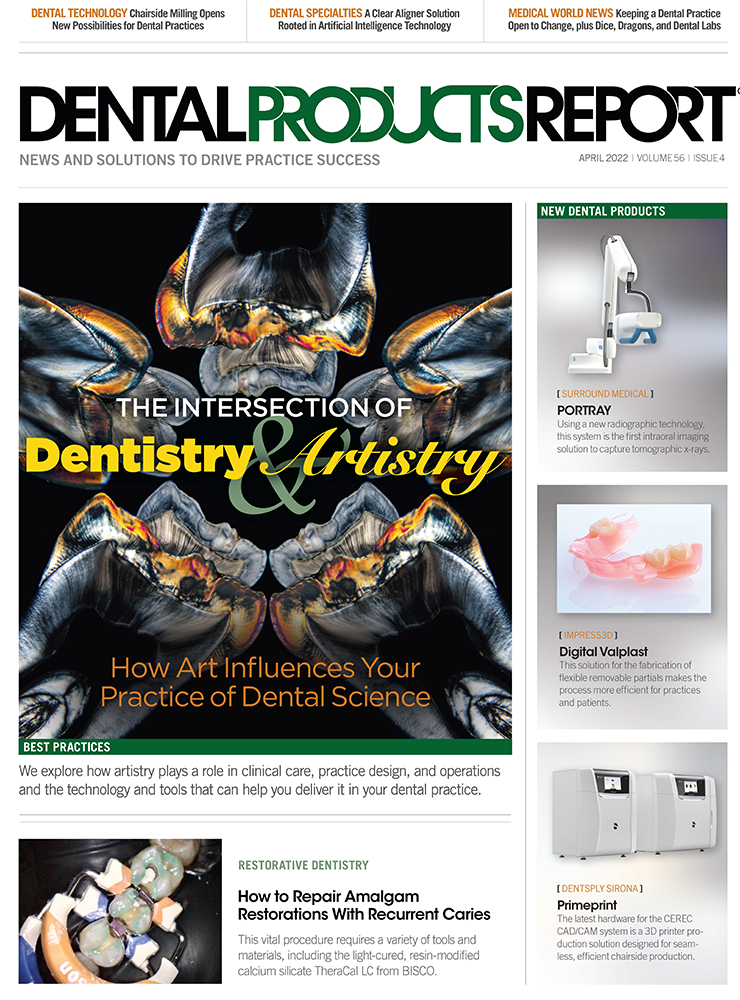
ACTIVA BioACTIVE Bulk Flow Marks Pulpdent’s First Major Product Release in 4 Years
December 12th 2024Next-generation bulk-fill dental restorative raises the standard of care for bulk-fill procedures by providing natural remineralization support, while also overcoming current bulk-fill limitations.